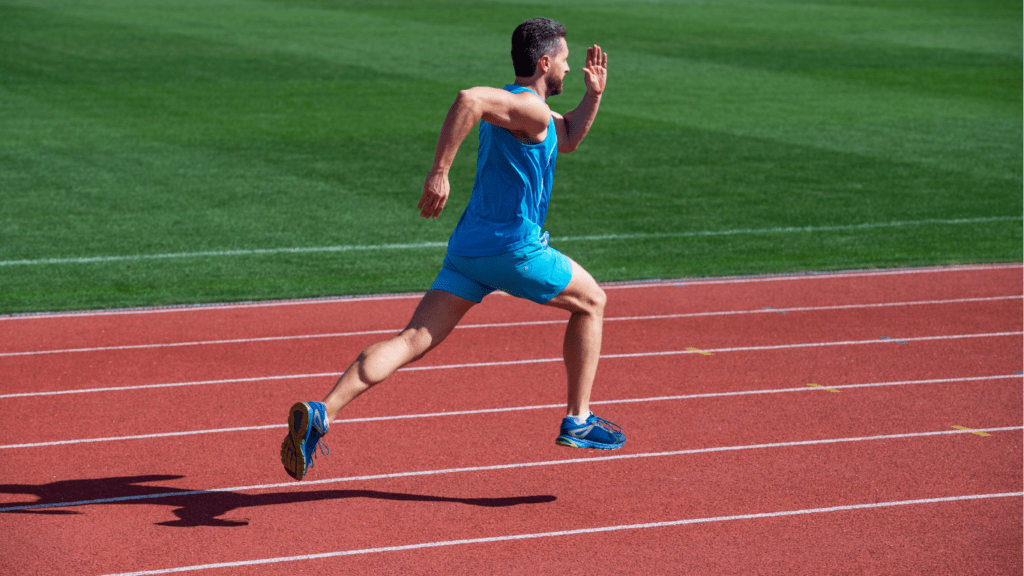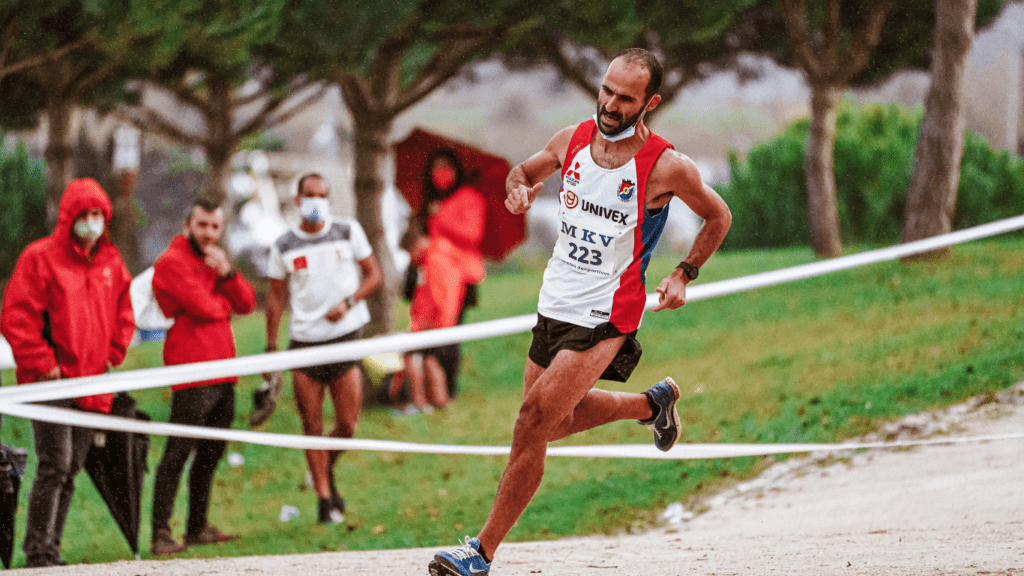Understanding Running Pace
Running pace is crucial for runners looking to improve their performance and endurance. Let’s delve deeper into what running pace is and why it matters.
What Is Running Pace?
Running pace represents the speed at which a runner moves, usually measured in minutes per mile or kilometer. For example, an 8-minute mile pace means it takes 8 minutes to run one mile.
Elite runners often track their pace using GPS watches which provide real-time updates. By understanding their pace, runners can optimize their training, ensuring they hit their target times without overexerting.
Why It Matters for Runners
Running pace plays a significant role in training and race performance. Consistent pacing helps runners avoid the common pitfall of starting too fast and burning out early.
By maintaining a steady pace, runners can conserve energy, improve their stamina, and achieve better race times.
For instance, marathon runners who manage their pace well are more likely to complete the race without facing severe fatigue.
Elite athletes use pacing strategies to distribute their effort evenly, enhancing overall performance and reducing the risk of injury.
Learning from the Best: Elite Runners’ Insights
Elite runners’ experiences offer valuable lessons for improving speed and maintaining pace. Here’s a look at their strategies and common pacing mistakes to avoid.
Key Strategies for Speed Improvement
Elite runners focus on several key strategies to boost speed:
- Interval Training: Short, intense bursts improve both speed and cardiovascular capacity. For instance, alternating between 400m sprints and recovery jogs.
- Tempo Runs: Sustained efforts at a challenging but manageable pace. This enhances lactate threshold, improving endurance performance.
- Strength Training: Builds muscle and reduces injury risk by incorporating exercises like squats, lunges, and core workouts.
- Proper Nutrition: Fuels training and recovery with a balanced diet, including carbohydrates, proteins, and healthy fats.
- Rest and Recovery: Allows the body to repair and adapt after hard training sessions, typically involving rest days and light activities.
Avoiding Common Pacing Mistakes
Avoiding frequent pacing errors can enhance performance:
- Starting Too Fast: Leads to early burnout, reducing performance over longer distances. Manage energy by maintaining a consistent pace.
- Ignoring Fatigue: Causes potential injuries. It’s essential to listen to the body’s signals and adjust as needed.
- Neglecting Warm-Up and Cool-Down: Can result in muscle strains and reduced efficiency. Incorporate dynamic stretches pre-run and static stretches post-run.
- Erratic Pacing: Makes it hard to gauge efforts. Use GPS watches or apps to monitor and maintain a steady pace.
- Overtraining: Can lead to exhaustion and decreased performance. Balance intense workouts with adequate rest.
Implementing these insights will help achieve faster runs with lower injury risk, drawing from the expertise of elite runners.
Training Techniques for Increasing Speed

Elite runners employ specific training techniques to improve their speed sustainably. The following methods provide detailed insights into practices that enhance running performance.
Interval Training Explained
Interval training involves alternating between high-intensity bursts and low-intensity rest or recovery periods. This method increases speed and endurance.
For example, performing 400-meter sprints followed by 200-meter jogs for recovery helps improve the body’s ability to handle higher speeds over longer durations.
The key is consistency, with interval training included in weekly routines to build cardiovascular strength and muscular endurance.
Long Runs and Tempo Runs
Combining long runs with tempo runs helps boost overall speed and stamina. Long runs, typically extending 1.5 to 2 times the race distance, build endurance by increasing the body’s ability to sustain effort over time.
For instance, marathon runners might engage in 20-mile runs to simulate race conditions.
Tempo runs involve running at a “threshold” pace, which is slightly slower than race pace but faster than easy runs.
These runs, usually lasting 20 to 40 minutes, increase lactate threshold, allowing the body to run faster without accumulating fatigue. Incorporating these runs twice per week enhances speed and overall race performance.
Proper Gear and Nutrition
Elite runners know that proper gear and nutrition are vital components of improving speed. Selecting the right running shoes and following a balanced nutrition plan enhance performance and reduce injury risk.
Choosing the Right Running Shoes
Choosing the right running shoes directly affects speed and overall performance. A good pair should offer support, cushioning, and durability.
Elite runners often consider foot type, gait, and running environment when selecting shoes. For example, those with flat feet might benefit from stability shoes, while runners with high arches might prefer neutral shoes.
Regularly replacing shoes, approximately every 300-500 miles, helps maintain optimal performance and minimize injury risk.
The Role of Nutrition in Running Performance
Nutrition plays a pivotal role in running performance. Consuming balanced meals with proteins, carbs, and fats provides energy and aids recovery.
Carbs are crucial for long runs as they are the primary energy source, while proteins aid muscle repair. Hydration is equally important, with elite runners often drinking water and electrolyte-rich beverages to maintain fluid balance.
Some also use performance gels or bars during long runs to sustain energy levels. Proper pre-run and post-run nutrition routines optimize performance and recovery.
By giving attention to gear and nutrition, runners can significantly improve their speed and performance.



